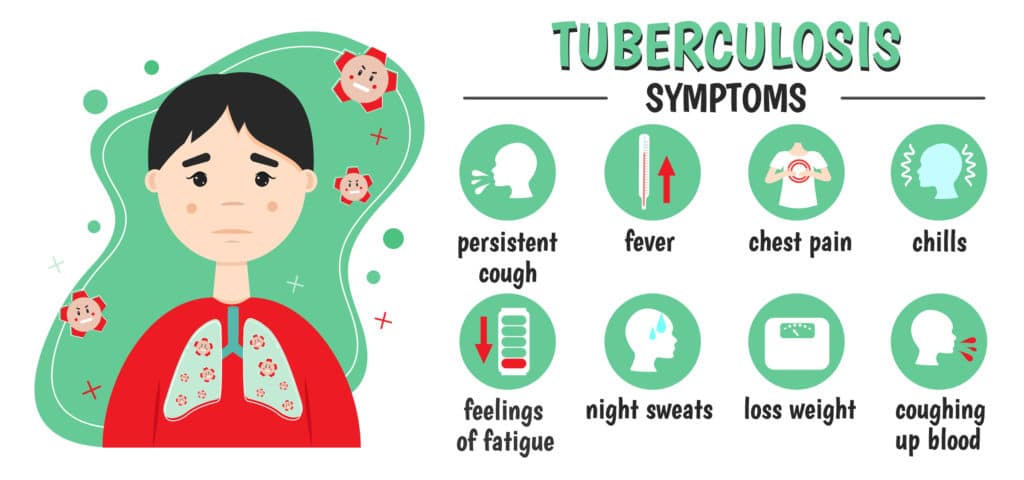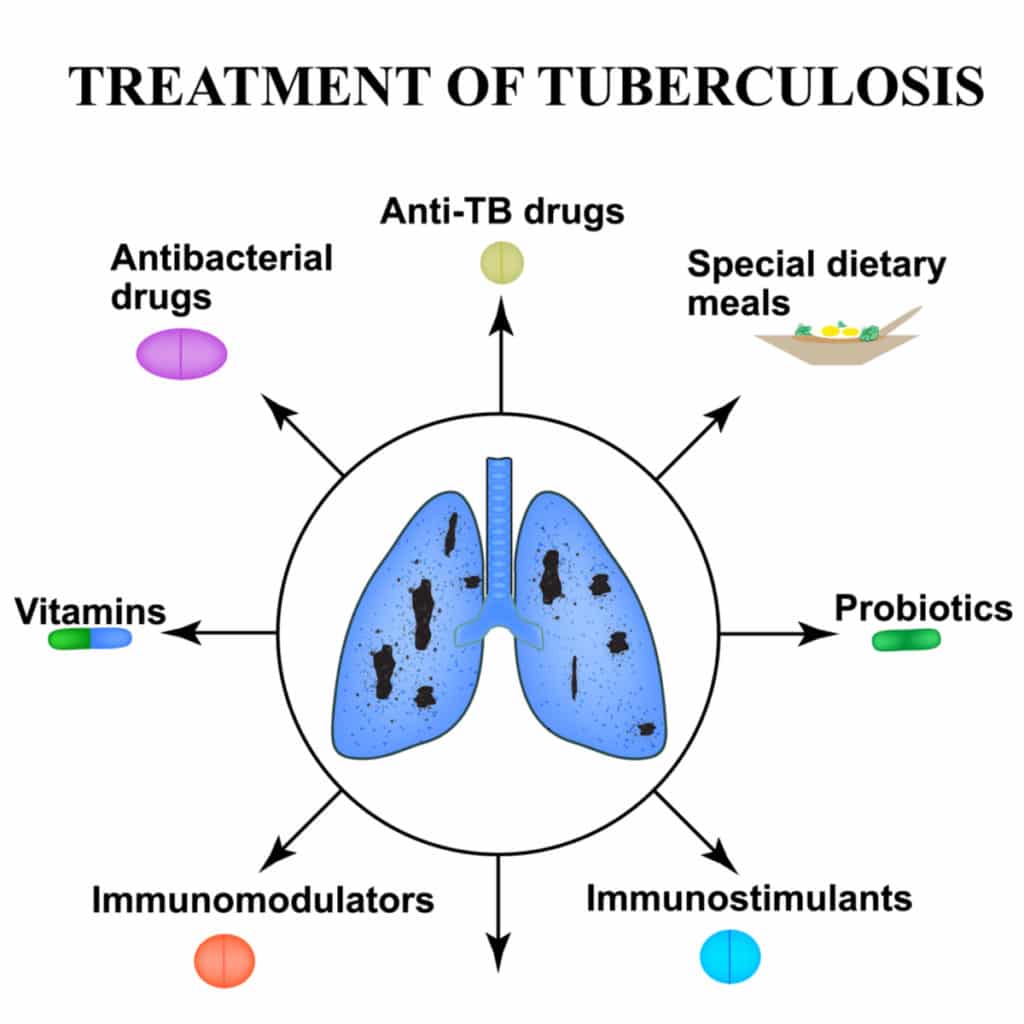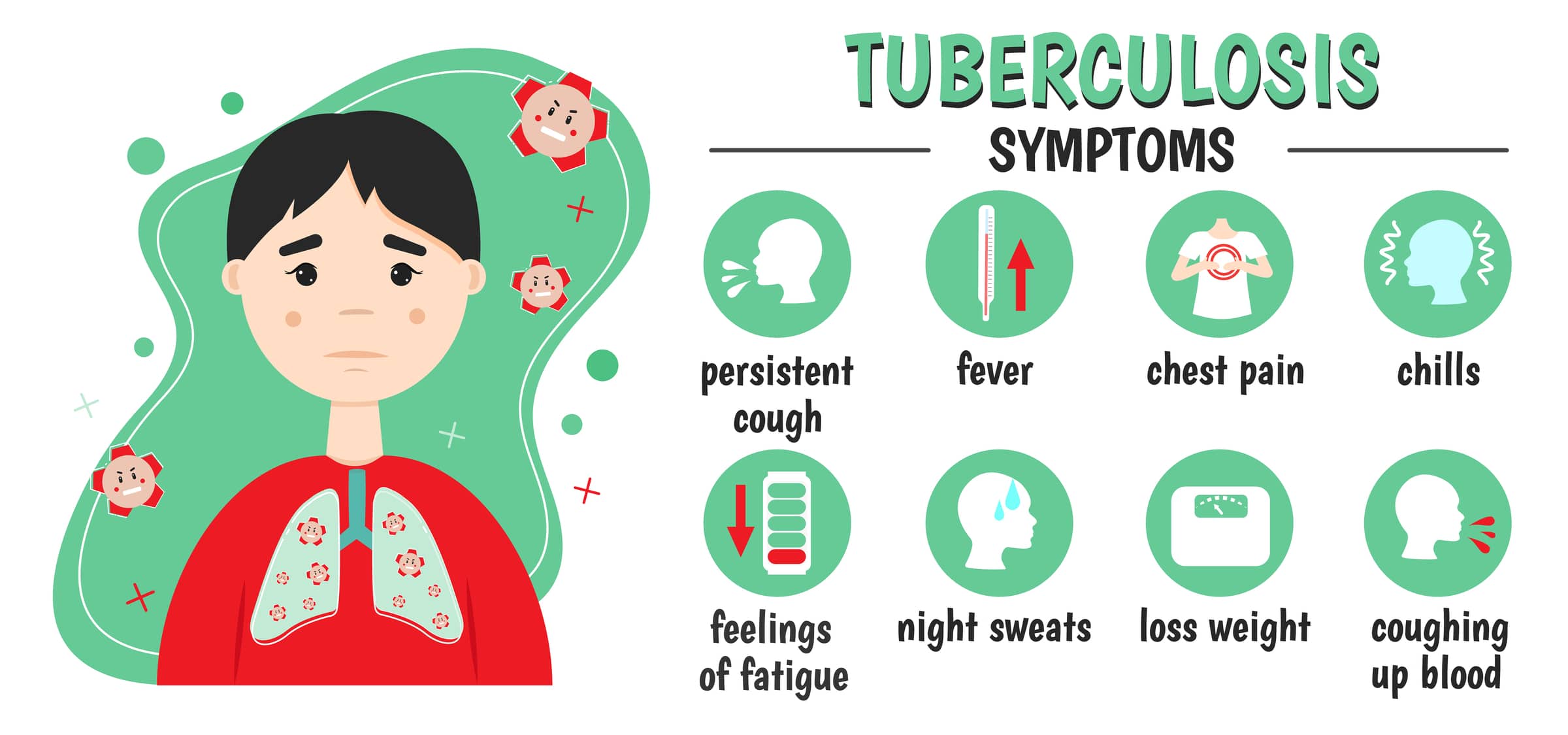What is tuberculosis
Tuberculosis is an airborne infection caused by the organism Mycobacterium tuberculosis that mainly affects the lungs.
Forms of TB
Tb manifests in various forms. The most common form is the pulmonary tuberculosis (TB in lungs). Other forms of TB usually referred to as extrapulmonary TB ( TB in places other than the lungs] includes, but is not limited to:
- Tuberculous Spondylitis (TB of the spine);
- Tuberculous Meningitis;
- Abdominal Tuberculosis (including Tuberculous Peritonitis, Enteritis and Mesenteric adenitis);
- Tuberculosis of the Joints;
- TB of the Gonads (Testes and Ovaries);
- TB of the kidneys;
- TB of the breasts;
- Skeletal TB (TB of the bone and joint);
- Lymph node TB;
Types of Tuberculosis
- Latent TB
- Active TB Disease
- Military or Disseminated TB (widespread form of the disease).
Which bacteria causes tuberculosis
The bacteria that causes tuberculosis is the Mycobacterium tuberculosis (M. tb)
Symptoms of Tuberculosis
Signs and symptoms of TB include
- Cough that lasts three or more weeks
- Coughing up blood
- Chest pain while breathing or coughing
- Fatigue
- Unintentional weight loss
- Chills
- Night Sweats
- Loss of appetite
- Fever

Treatment of tuberculosis

Treatment of tuberculosis involves a combination of the following:
- Use of anti-tuberculosis drugs
- Antibiotics
- Special diet
- Prebiotics
- Vitamins
- Immunomodulators
- Immunostimulants
About the author
Nwasom is a pharmacy graduate and a pharmacist currently practising in the United Kingdom. I have great experience communicating with patients and their family as gained through working as a pharmacist in both the hospital and community pharmacy sector. I love writing so it was a natural thing to try and pass medical and health information on through writing.





